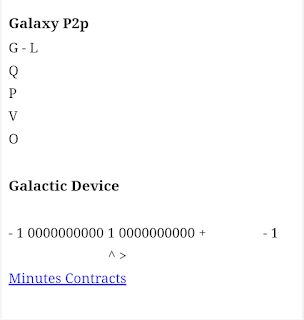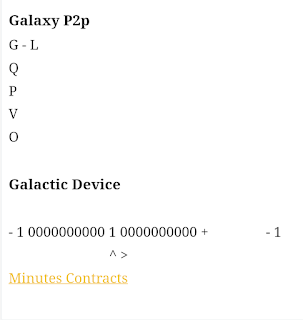Here’s a sample nuclear physics test with a range of question types (multiple choice, short answer, and problem-solving).
---
Nuclear Physics Test
Part 1: Multiple Choice (1 mark each)
1. Which of the following particles is released during alpha decay? a) Electron
b) Neutron
c) Alpha particle
d) Proton
2. What is the binding energy of a nucleus? a) Energy required to break the nucleus into free protons and neutrons
b) Energy released when a nucleus is formed from free protons and neutrons
c) Energy released during radioactive decay
d) The energy of the nucleus at rest
3. In a fission reaction, which of the following is a product? a) Heavy isotopes
b) Light isotopes
c) A neutron
d) Both b and c
4. What is the half-life of a radioactive isotope? a) The time it takes for half of a sample to decay
b) The time it takes for all of a sample to decay
c) The time required for the isotope to reach stability
d) The time it takes for the sample to reach equilibrium with its environment
5. What happens to the mass of a nucleus during fusion? a) It increases
b) It decreases
c) It remains unchanged
d) It depends on the type of reaction
Part 2: Short Answer (2 marks each)
6. Explain the difference between nuclear fission and nuclear fusion.
7. What is the role of a moderator in a nuclear reactor?
8. What is a chain reaction in nuclear fission? Explain how it is sustained in a reactor.
9. Why is the mass of a nucleus slightly less than the sum of the masses of its constituent protons and neutrons?
10. How does the principle of conservation of mass-energy apply to nuclear reactions?
Part 3: Problem-Solving (3 marks each)
11. If a sample of a radioactive substance has a half-life of 10 years, how much of a 100 g sample will remain after 30 years?
12. Calculate the energy released during the fission of one atom of Uranium-235. The mass defect for Uranium-235 is 0.2 amu, and you can use Einstein’s equation , where .
13. In a nuclear reaction, a neutron of 2 MeV strikes a Uranium-235 nucleus, causing it to undergo fission. What is the approximate energy released per fission reaction?
14. A certain isotope has a half-life of 5 hours. How much of a 200 g sample will remain after 15 hours?
Part 4: True/False (1 mark each)
15. A neutron can be absorbed by a nucleus to trigger a nuclear reaction. (True/False)
16. Alpha particles have greater penetration power than beta particles. (True/False)
17. The process of nuclear fusion powers the Sun. (True/False)
18. In a chain reaction, the number of fission events doubles with each generation. (True/False)
19. Gamma radiation consists of high-energy electromagnetic waves. (True/False)
---
This test covers the basic concepts of nuclear physics, including decay processes, energy release, and reactions. If you'd like further details or a different format, feel free to let me know!
Here are the answers to the Nuclear Physics Test:
---
Part 1: Multiple Choice
1. Which of the following particles is released during alpha decay?
Answer: c) Alpha particle
2. What is the binding energy of a nucleus?
Answer: b) Energy released when a nucleus is formed from free protons and neutrons
3. In a fission reaction, which of the following is a product?
Answer: d) Both b and c (Light isotopes, A neutron)
4. What is the half-life of a radioactive isotope?
Answer: a) The time it takes for half of a sample to decay
5. What happens to the mass of a nucleus during fusion?
Answer: b) It decreases
---
Part 2: Short Answer
6. Explain the difference between nuclear fission and nuclear fusion.
Answer: Nuclear fission is the process in which a heavy nucleus (such as Uranium-235) splits into smaller nuclei, releasing energy. Nuclear fusion is the process in which two light nuclei (such as hydrogen) combine to form a heavier nucleus, also releasing energy.
7. What is the role of a moderator in a nuclear reactor?
Answer: A moderator slows down fast neutrons produced during fission, allowing them to be absorbed more effectively by other fuel nuclei, sustaining the chain reaction.
8. What is a chain reaction in nuclear fission? Explain how it is sustained in a reactor.
Answer: A chain reaction occurs when the products of a nuclear fission event (e.g., neutrons) trigger further fission events. In a reactor, the chain reaction is sustained by controlling the number of neutrons through the use of moderators and control rods.
9. Why is the mass of a nucleus slightly less than the sum of the masses of its constituent protons and neutrons?
Answer: This is due to the release of energy when the nucleus is formed. This energy corresponds to a small loss of mass, which is described by Einstein's equation .
10. How does the principle of conservation of mass-energy apply to nuclear reactions?
Answer: In nuclear reactions, the total mass and energy are conserved. The mass lost during a reaction is converted into energy, as described by Einstein's equation .
---
Part 3: Problem-Solving
11. If a sample of a radioactive substance has a half-life of 10 years, how much of a 100 g sample will remain after 30 years?
Answer:
Half-life = 10 years
After 30 years, 3 half-lives have passed.
Remaining mass =
12. Calculate the energy released during the fission of one atom of Uranium-235. The mass defect for Uranium-235 is 0.2 amu, and you can use Einstein’s equation , where .
Answer:
Mass defect = 0.2 amu
Convert to kg: , so
Mass defect =
Energy =
Energy =
13. In a nuclear reaction, a neutron of 2 MeV strikes a Uranium-235 nucleus, causing it to undergo fission. What is the approximate energy released per fission reaction?
Answer:
The energy released in a typical Uranium-235 fission reaction is approximately 200 MeV (this is the energy released during the entire fission event).
14. A certain isotope has a half-life of 5 hours. How much of a 200 g sample will remain after 15 hours?
Answer:
Half-life = 5 hours
After 15 hours, 3 half-lives have passed.
Remaining mass =
---
Part 4: True/False
15. A neutron can be absorbed by a nucleus to trigger a nuclear reaction.
Answer: True
16. Alpha particles have greater penetration power than beta particles.
Answer: False (Alpha particles are more easily stopped, usually by a sheet of paper, whereas beta particles penetrate more deeply.)
17. The process of nuclear fusion powers the Sun.
Answer: True
18. In a chain reaction, the number of fission events doubles with each generation.
Answer: True (Assuming that enough neutrons are available to continue the chain reaction.)
19. Gamma radiation consists of high-energy electromagnetic waves.
Answer: True
---
These answers should help you review the material and prepare for your test. Let me know if you need any more clarification!







0 Comments